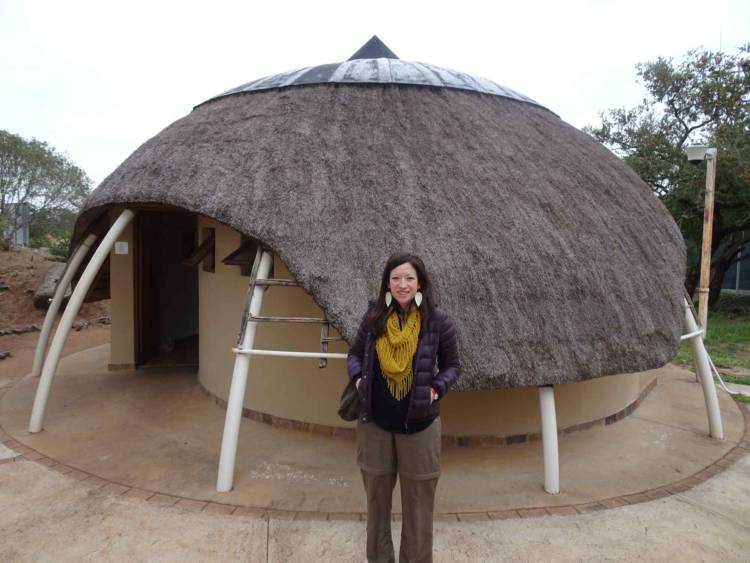Parterre Designer Conversation Series: Jennifer Countryman

For our next edition of the Parterre Designer Conversation Series, we had the opportunity to speak with Jennifer Countryman, a 20-year industry veteran and expert in the field of architecture and design. She is currently a Principal and Vice President at MNK Architects in El Paso, Texas. Countryman and her firm practice throughout the southwestern United States, working across all industries such as healthcare, education, retail, residential and more.
She shared with us some of her insights on the industry — including trends, where she finds inspiration and her experience with luxury vinyl flooring.
Parterre: What do you enjoy most about being a designer?
Jennifer Countryman: It gives you the ability to design environments that are more reflective of those who occupy them. Design gives you the opportunity to build places for yourself and others that each person can better relate to and be comfortable in. It’s a platform for much-needed self-expression in an ever-blander world.
Parterre: What do you feel has changed the most about the design industry since you first became a designer?
JC: I think there’s just a huge emphasis on integrating technology into everything we do. Everything has to be connected, with all kinds of technology and security. For example, we include elements such as power and IT in lounge furniture, electrical and tech connections in outdoor areas, and overall universal access to technology.
Parterre: Where do you find inspiration for interior design? What inspires you?
JC: Travel. I like to completely disconnect and leave for a few weeks. Changes in your surroundings, and new topics and experiences allow your mind to wander instead of being stuck in the day-to-day routine. I get my best ideas when I’m very far away from home.

Parterre Designer Conversation Series | Jennifer Countryman
Parterre: In your work environment, what helps you get creative or be inspired to design? (i.e. soft music, a comfortable space to work in like a couch, natural lighting)
JC: I studied sociology and a primary reason we have routines is because there are a million ways to do any given thing, so when you have a strong routine you can use your mental capacity to focus on other things, like your work and creative projects.
I come to work at the same time, sit at the same desk, in the same place – there is peace and space in routine.
Parterre: What is one thing you need on your desk when working?
JC: Caffeine! And a cell phone.
Parterre: What is your favorite design trend that you’ve seen in the industry recently?
JC: I really don’t like trends all that much, I try to look for each project and person’s personality and what they’re trying to do. I like to figure out people and things that inspire them.
Parterre: Are there any past trends you wish would make a comeback?
JC: If I had to choose, I would say unique and varied dimensions for everyday architectural features. Everything is so standardized as far as dimensions, so if you go back in time you have these different sized and shaped doors and weird windows and odd counters, and everything was just quirkier, which is hard to find now. Everything is off the shelf.
Parterre: Can you tell us about a recent project you’ve enjoyed being a part of? What drew you to this project?
JC: We worked with a recent client to reconceive their organizational structure as it relates to facilities, and created a pilot concept for institution-wide adoption. The project goals included improving customer service, supporting teamwork, and even attracting younger talent, as one-third of the workforce is scheduled to soon retire. It was fun because there were so many angles we could help from.
Parterre: What is a common design challenge you see when designing different spaces and how do you overcome it?
JC: Well, this is boring but true – it usually comes down to time and money. Everything is under a time crunch and finding cost-effective solutions — solutions that make sense at a reasonable price and make sense from a business perspective — can be challenging.
Parterre: What design element do you typically consider first when designing a space and why? For instance, some start with the furnishings or others may start with the flooring design.
JC: We kind of read over all the requirements, try to address them holistically, and move the design forward all together at once. I like to understand where the project is exactly, which means understanding the building or project’s context, meeting neighbors and seeing what the views or nuisances are. This all helps me get a strong sense of place. My next step is to get a deep understanding of an organization, its people, and their goals.
Parterre: What is your experience with using Parterre LVT or your general opinion on luxury vinyl? And where do you see LVT the most (i.e. a particular industry)?
JC: We use LVT mostly in areas where we want people to feel relaxed, at ease, at home, but where there is a need for commercial-grade solutions. LVT is an important tool to use where people can’t experience that home-like feeling but still need that comfort.
LVT helps them connect, and we’ve used it to create that warmer environment in hospitals, doctor’s offices or residential areas. It’s more commercial and durable but helps create that sense of home.
Parterre: What is your go-to product or a general design element that you try to incorporate into projects?
JC: I truly don’t have any go-to products. We pick each product based on the character and functional needs of our clients.
Roche FitzGerald
Roche FitzGerald, Lead Product Designer for Parterre, is a second-generation artisitc giant in the flooring industry developing an appreciation for art and physical composition from his father, who was also an artist and leader in surface design.
“The mindset I have when creating art is that accidents are beautiful, which is something my father instilled in me,” said Roche. “There is an allure to discovering organic textures, patterns, and colors.”
A true artist at heart, Roche shapes designs from his own paintings or the inspirations of daily life. In the early 2000s, while other companies were turning to their manufacturers for options, Roche led the way in producing original flooring designs earning multiple industry awards and recognition for his luxury vinyl designs.
Polished Concrete vs. Vinyl Flooring
Polished Concrete vs. Vinyl Flooring Polished concrete vs. vinyl flooring. It’s not an easy decision, considering both provide an excellent solution for commercial flooring. The look of concrete floors has been a growing trend for commercial interiors.
Chevron and Herringbone
Break the Pattern of Commercial Flooring You can add more flair to your commercial flooring by breaking from the look of traditional straight-line, square, and diagonal patterns. Eye-catching looks like chevron and herringbone will dot the designer landscape in 2024.